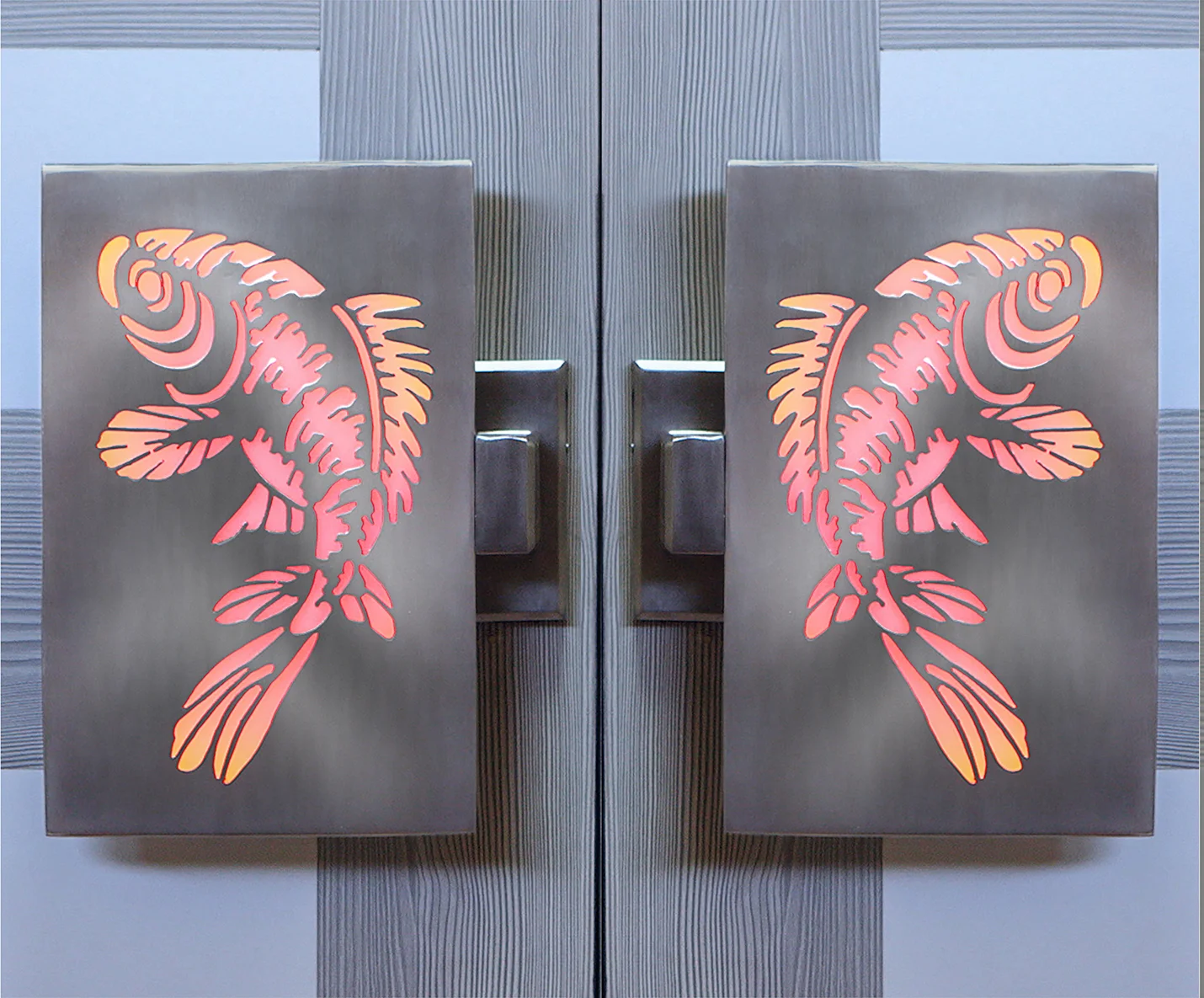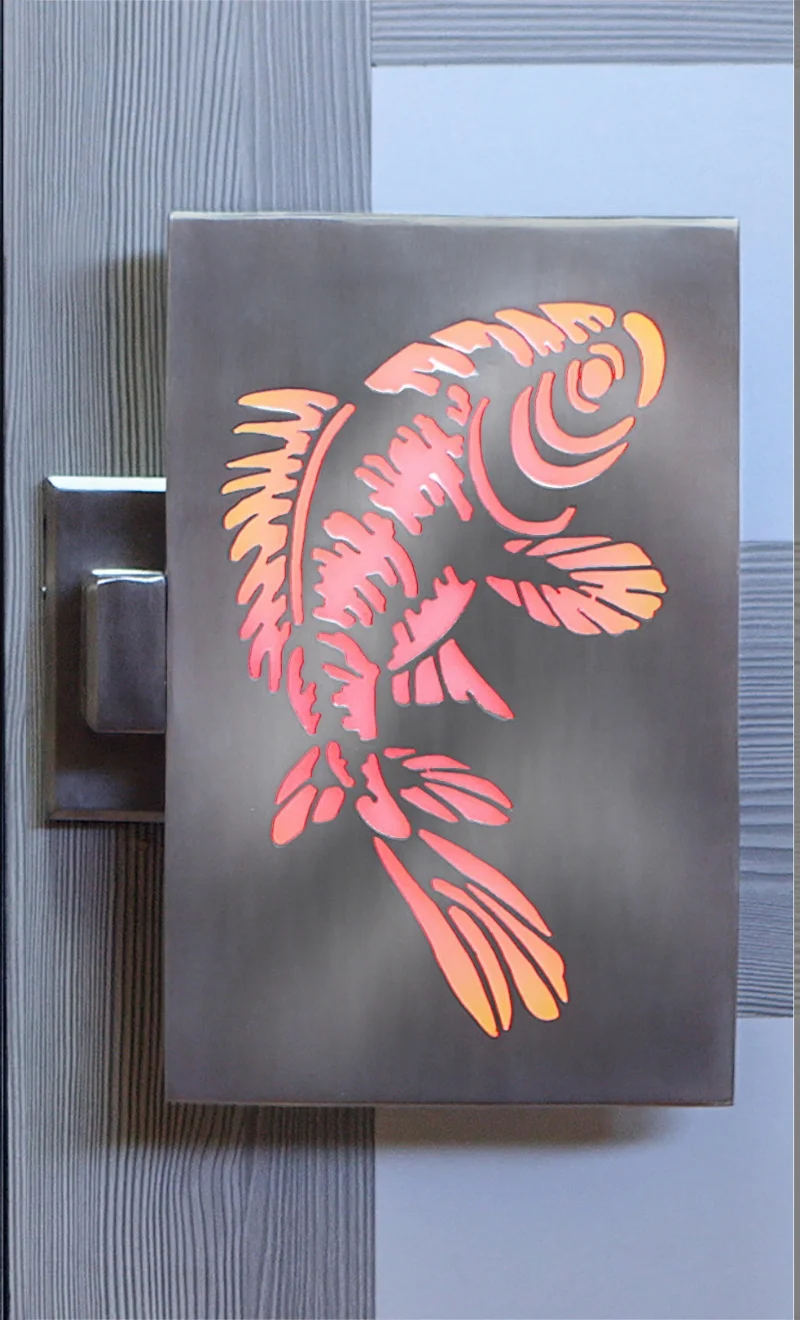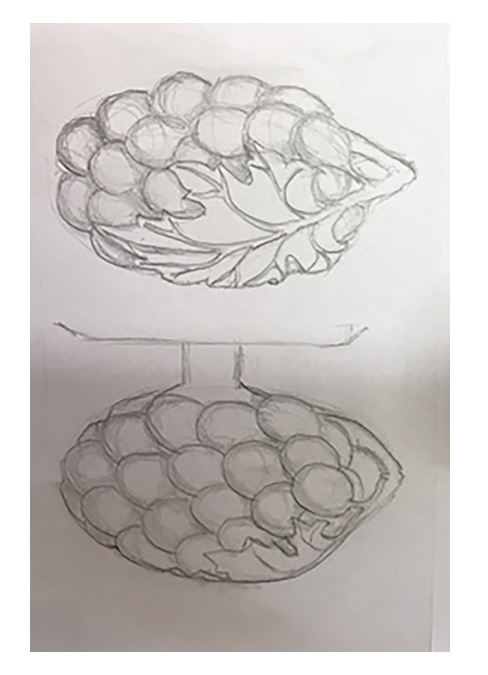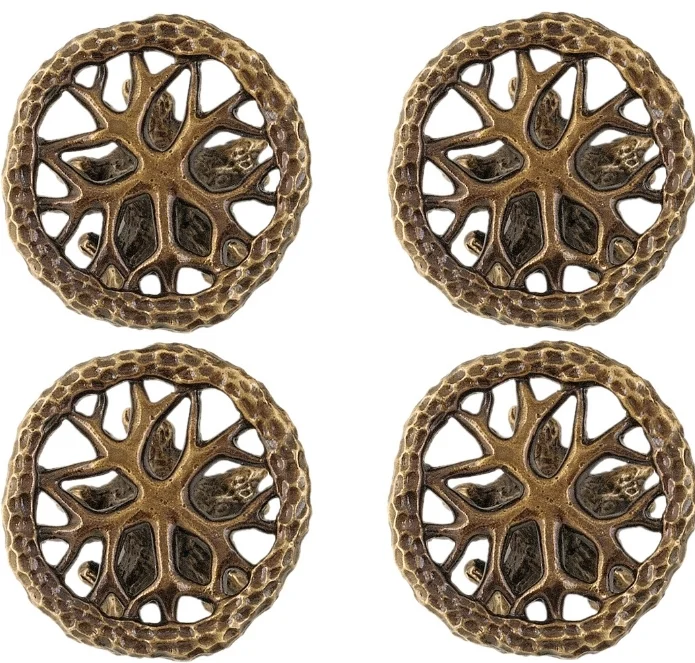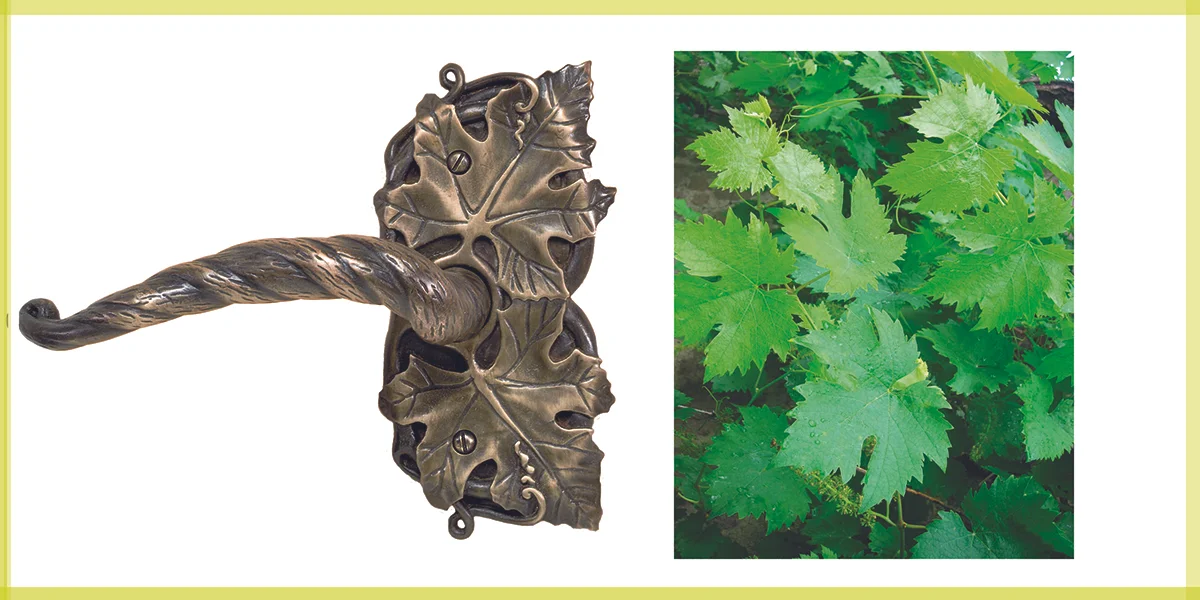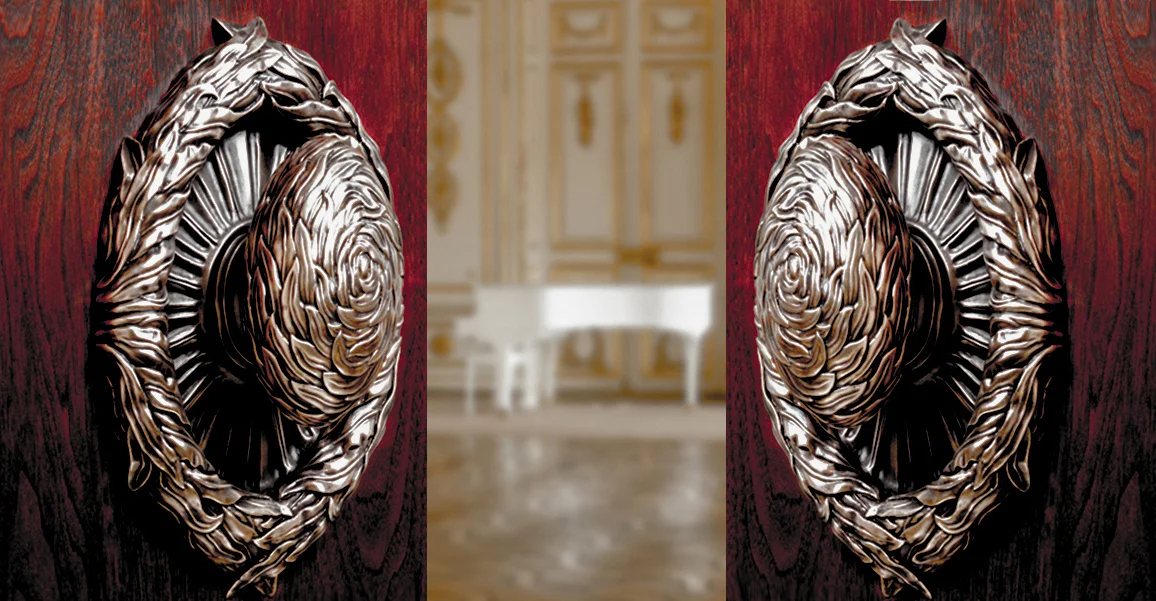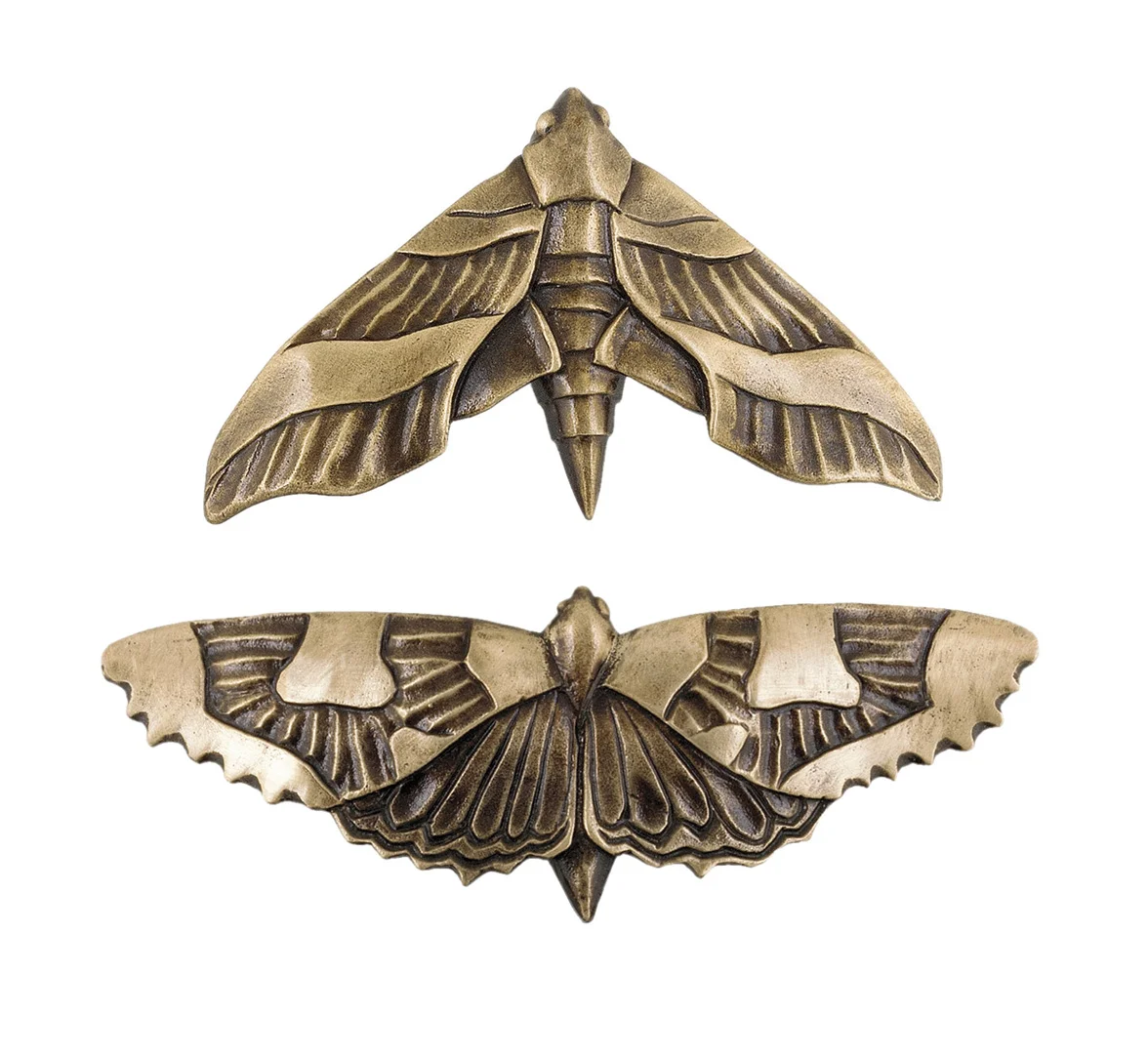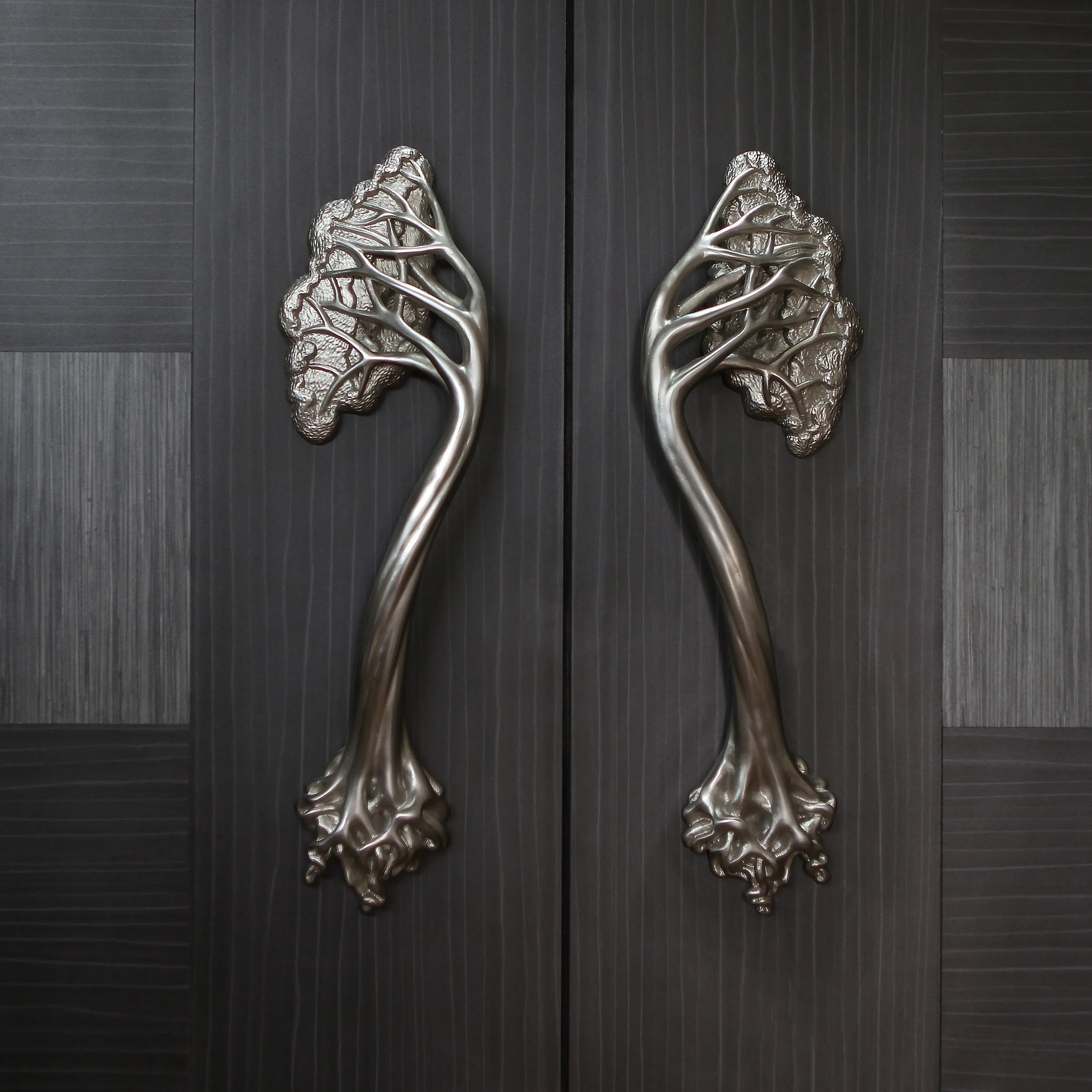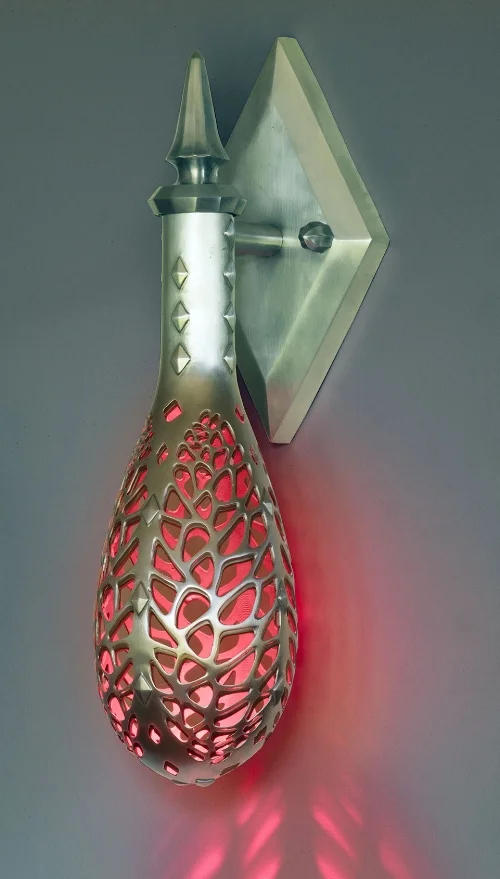The green anole lizard was the inspirational basis of Martin Pierce’s lizard door lever. The lizard’s vivid pea green color is however a challenging finish to capture as a bronze patina and one that requires considerable dexterity and access to a blow torch, so hobbyists should proceed with caution.
While the lizard door knob is not of the anole family, as you can see from the photo below he is often specified by customers who want a similar finish to match his mate.
In an earlier post we described how to create an antique patina on bronze by using Birchwood Technologies' M20 product and how this chemical solution, through chemical conversion, creates a brown black patina that penetrates and bonds with the bronze. The cold patina process is a necessary first step that has to be taken before moving on to create a hot green patina as without it, the green solution will tend to slough of the surface of the bronze. Once the blackened piece has dried it is then gently burnished to remove some of the cold patina from the lizard area. We mix white, pea green and yellow dye oxides, available through Sculpt Nouveau, to create the right shade of green which is applied several times to the handle to achieve the right hue. Throughout the hot patina process the handle is kept at a temperature of about 200° by using a blow torch.
The vivid greens are used by many creatures as camouflage that allow them to blend in with surrounding flora as is the case with this praying mantis that was wonderfully hidden in the variegated tones of this begonia vine.








